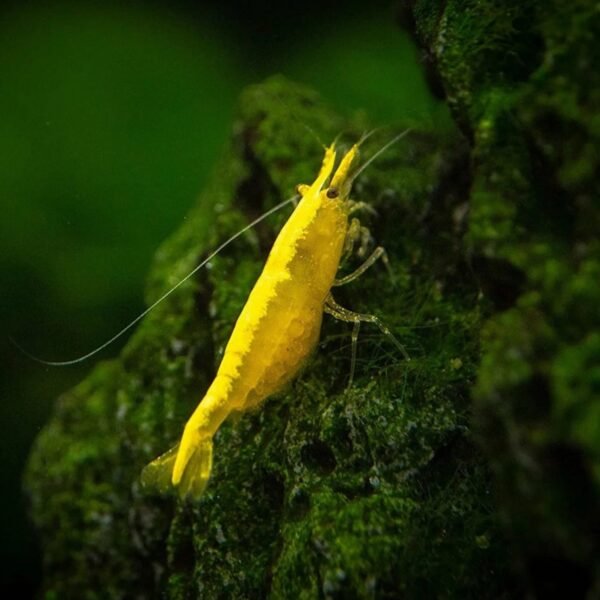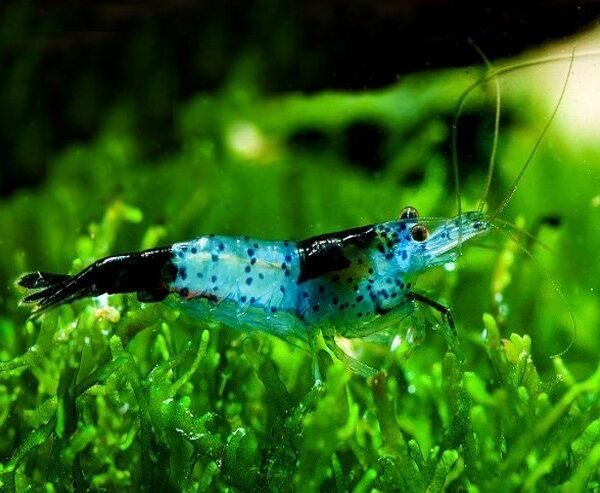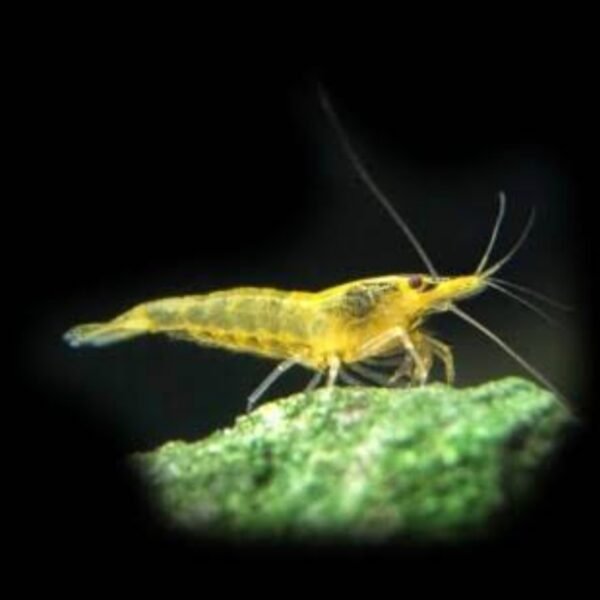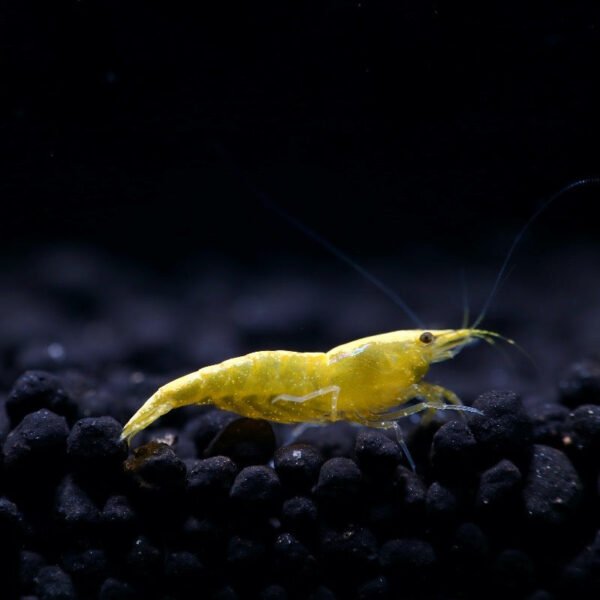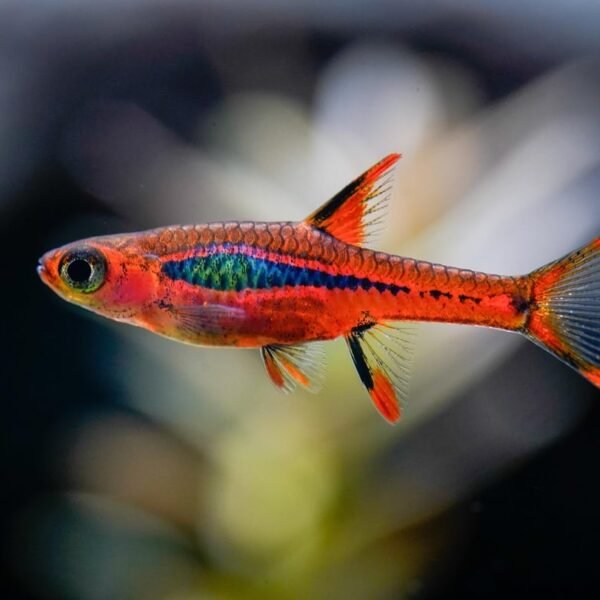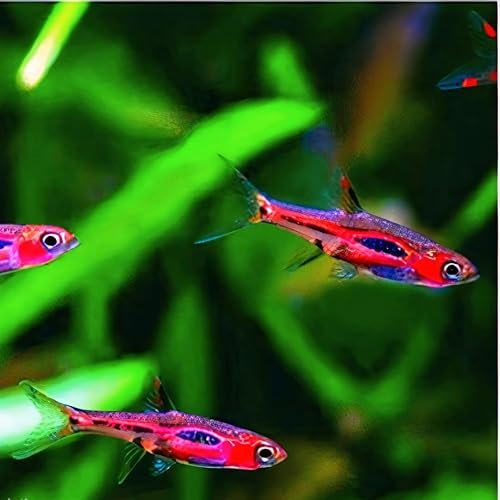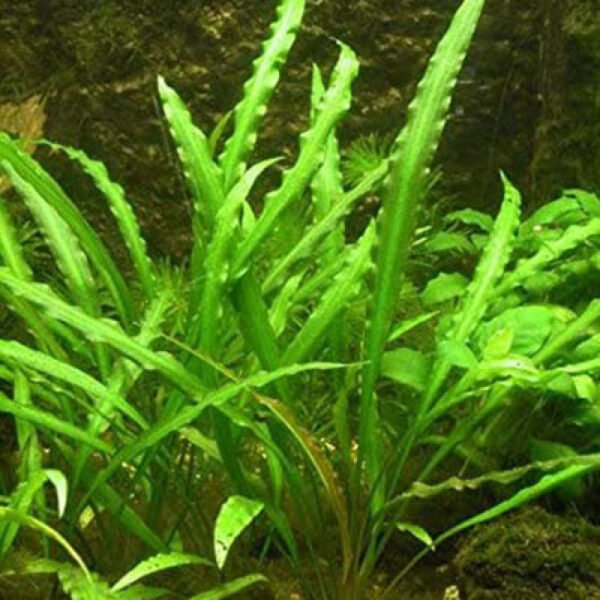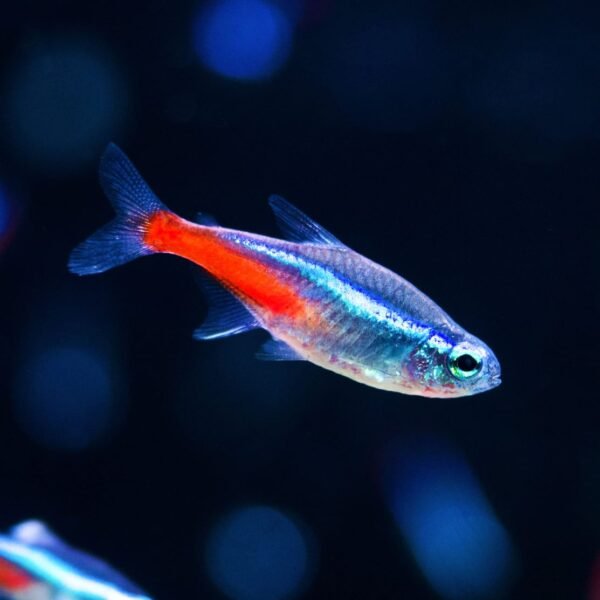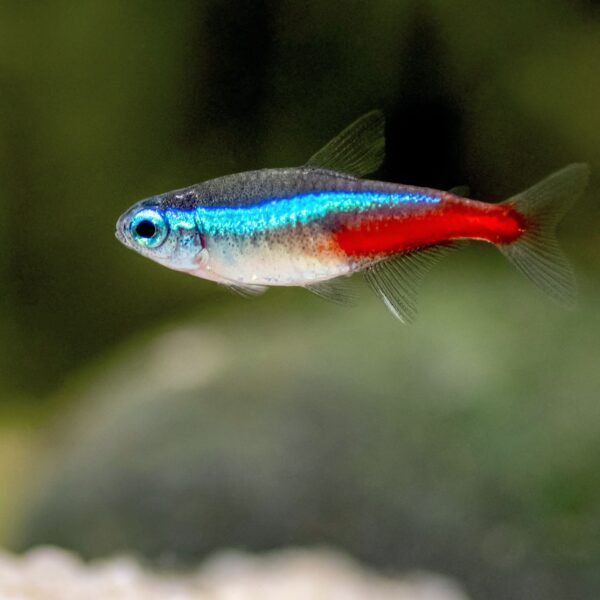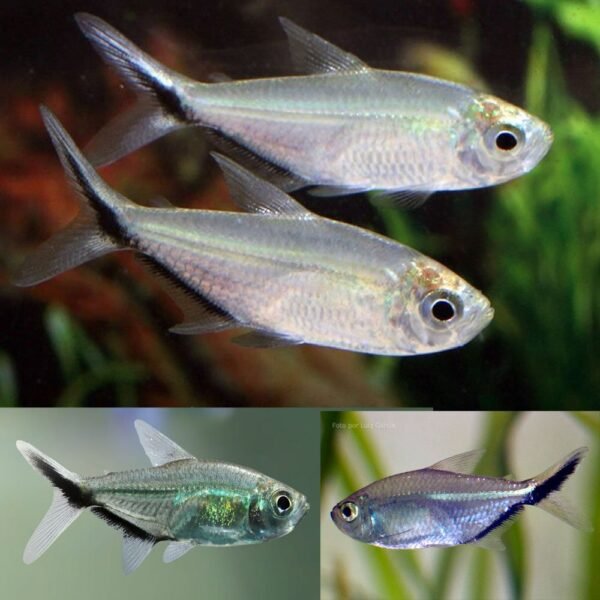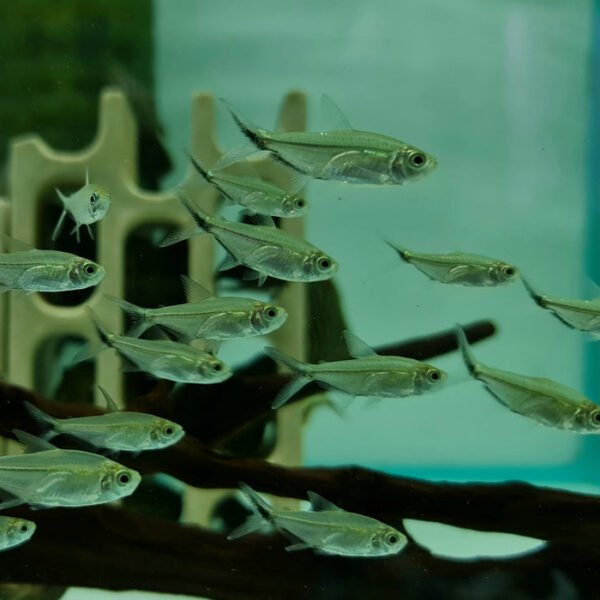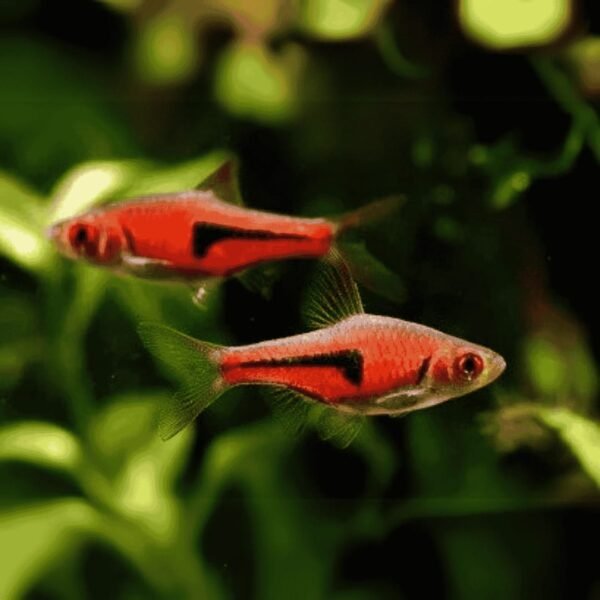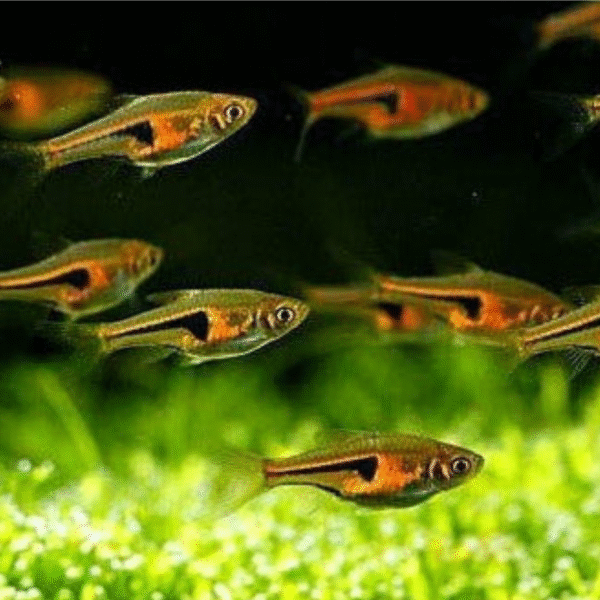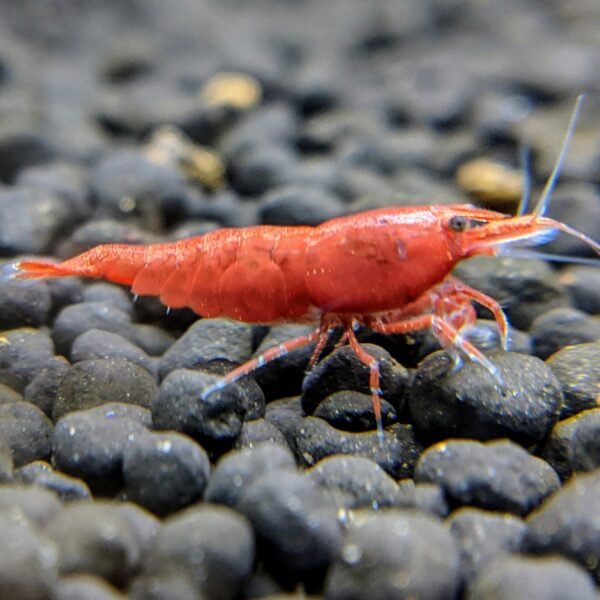Description
🌟 Red Rili Shrimp (Neocaridina davidi var. Red Rili)
📌 Basic Info
-
Scientific Name: Neocaridina davidi (Red Rili variant)
-
Common Name: Red Rili Shrimp
-
Size: ~1 – 1.2 inches (2.5 – 3 cm)
-
Lifespan: 1.5 – 2 years
-
Tank Zone: Bottom to mid (always grazing on plants, rocks, and decorations)
🌊 Water Parameters
-
TDS: 100 – 250 ppm
-
pH: 6.5 – 7.5
-
Temperature: 20°C – 26°C (68°F – 79°F)
-
Water Type: Freshwater (soft to moderately hard)
-
Hardness: GH 4–8, KH 3–6
🐟 Characteristics
-
Unique red and transparent patterned body (partially colored, partially clear).
-
Peaceful, small, and beginner-friendly.
-
Excellent algae and biofilm grazers.
-
Active, always exploring plants and substrate.
-
Females are larger and show stronger colors than males.
-
Can breed easily in stable tanks.
🍽️ Food
-
Type: Omnivorous scavenger.
-
Diet: Algae, biofilm, shrimp pellets, blanched vegetables (spinach, zucchini), spirulina, high-quality shrimp food.
-
Feeding Frequency: 3–4 times per week, in small portions.
🛠️ Maintenance
-
Perform 15–20% weekly water changes.
-
Use a sponge filter (safe for baby shrimp).
-
Provide plants, moss, and driftwood → natural hiding & grazing.
-
Avoid copper in medicines or fertilizers (toxic to shrimp).
-
Keep parameters stable rather than chasing perfect values.
👥 Social Behavior
-
Minimum Group Size: 10+ (they thrive in colonies).
-
Tank Mates: Peaceful small fish – rasboras, ember tetras, endlers, guppies, otocinclus, snails.
-
Avoid: Aggressive/predatory fish (bettas, cichlids, barbs, goldfish).
✅ Do’s
-
Keep them in planted aquariums with moss and hiding spots.
-
Acclimate slowly before introducing to a new tank.
-
Provide supplementary calcium for proper molting.
-
Maintain a stable, cycled tank.
❌ Don’ts
-
Don’t keep them with large or aggressive fish.
-
Don’t overfeed → causes pollution.
-
Don’t use copper-based treatments.
-
Don’t keep them in new/unstable tanks.
⭐ Quick Tips
-
Popular for their striking red + transparent body pattern.
-
Hardy, peaceful, and beginner-friendly.
-
Great natural algae eaters and active cleaners.
-
Look especially stunning in planted or mossy aquariums.

